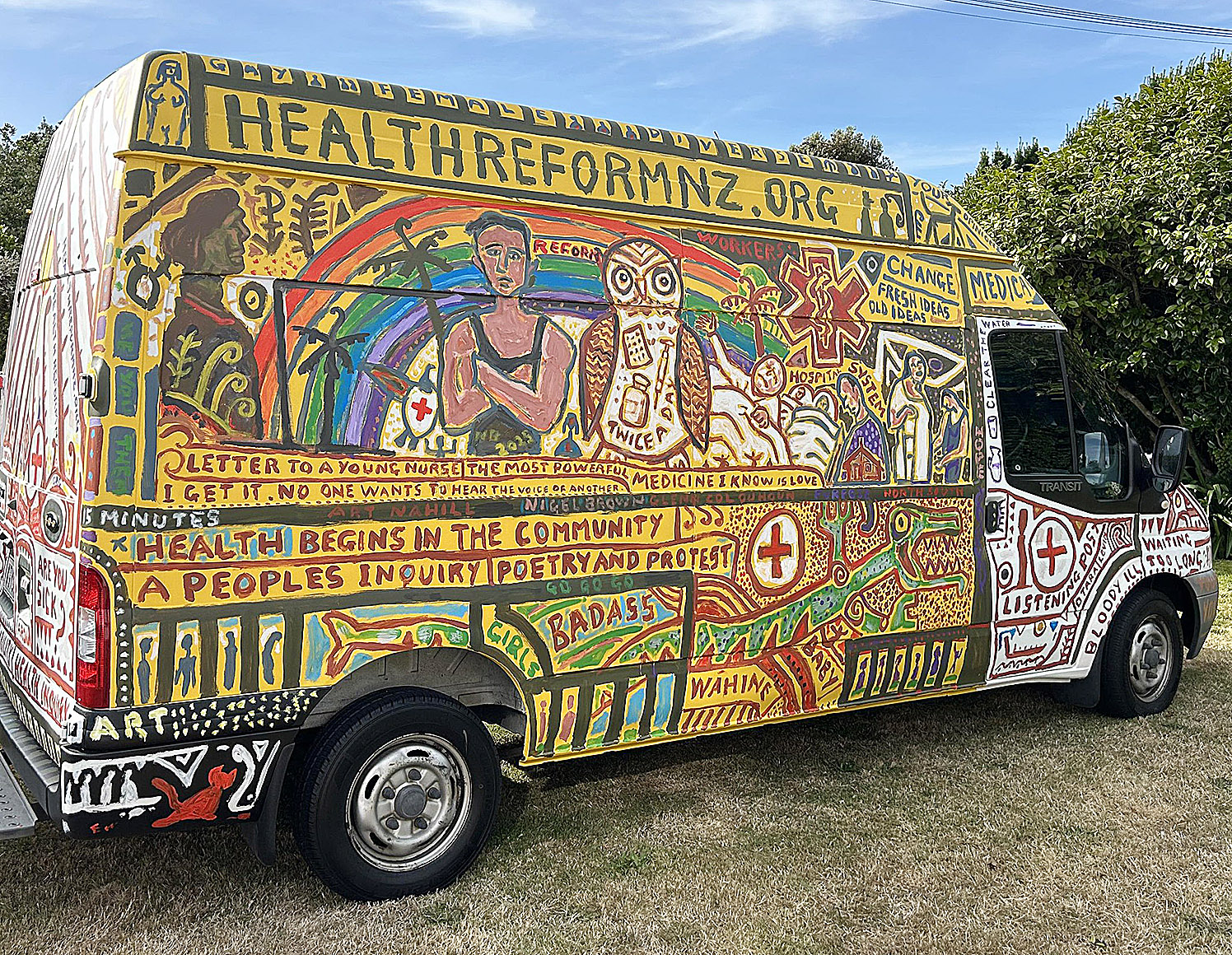Doctors hit the road to hear Kiwis’ stories

Kathy Forsyth
A packed room greeted two doctors in Whakatāne on Wednesday night as they made a stop on their two-week journey across the North Island, aimed at highlighting the growing crisis in New Zealand’s public health system.
Dr Art Nahill and Dr Glenn Colquhoun – travelling in their brightly decorated "vanbulance" -are on a 14-stop Hīkoi for Health, listening to communities and collecting stories about healthcare access, system failures, and local ideas for change. Whakatāne was the fifth stop on their journey, which will conclude at Parliament on May 8.
Their mission is simple: listen, document, and deliver the public’s voice to decision-makers. “It was our own frustration working with patients who are finding it difficult to access healthcare, and so we decided to create a hikoi and go to different communities and see what they think, take all those submissions, thoughts and ideas and then build some systems around that that might work better,” said Dr Colquhoun.
“In essence, doing what we think Government should do, come up with a better plan for healthcare delivery.”

The doctors say they will compile the hundreds of submissions into themes and work through them over several months. The result will be a written report outlining practical solutions based on what communities want and need.
Dr Nahill said the goal was to produce a public blueprint for change – one that voters could use to hold politicians accountable.
“One of the things that I have been so heartened about is that you all care passionately about what is happening to the healthcare system. I don’t remember a time when so many people were mobilised.”
The meeting in Whakatāne drew passionate contributions from medical professionals and members of the public. A consistent message emerged: politicians should step back and let healthcare professionals lead reform.
A nurse working in mental health said recruitment and retention were the biggest issues.
“The crisis team I work on is funded for seven staff. We have two, we have had five vacancies for years. We service a catchment area with a population size of 55,000 to 60,000 people. We are all exhausted, we are all working overtime and we are all getting older. We need to incentivise young doctors and nurses to remain in these areas.”
Dr Nahill said the Government needed to look at public health measures that impacted poor health.
“The rest of what they need to do is just get out of the way, decentralise funding and control over what happens and let people who are on the ground, who know their communities, know what works, allow them to deliver healthcare that is preventative and based on a much more global idea of health,” said Dr Nahill.
“We need a long-term plan and we need consistency.”
Dr Colquhoun also touched on the culture of silence in healthcare, with people too afraid to speak out.
“Why have we created a fear and what are we trying to hide?”
He said the balance between public and private healthcare was a major issue impacting healthcare.
Submissions can be made through their website, Healthreformnz.org and follow their journey on Instagram, @Hikoi for Health.